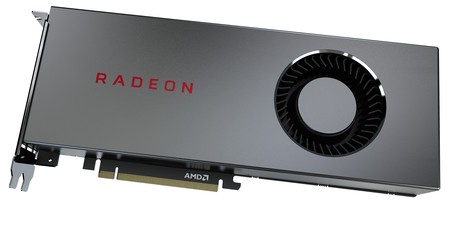
Manufacturer: AMD
UK price (as reviewed): MSRP £329.99 (inc. VAT)
US price (as reviewed): MSRP $349.99 (exc. tax)
AMD’s launch strategy for its new Navi graphics cards has echoes of previous new AMD GPU launches including Vega 64/Vega 56 and R9 290X/R9 290 i.e. one full enabled and more power hungry card and one with slightly fewer key processing units, better efficiency, and better value. For Navi, the RX 5700 XT fills the latter slot and has delivered new levels of efficiency that AMD desperately needed for its GPUs while successfully outdoing Nvidia at the $399 price point when it comes to standard rasterisation performance. Cooler design aside, it’s a good card, but with the RX 5700 coming in for $50 less it’s likely going to be the more exciting launch for many, much like Vega 56 and R9 290 were in their time.
The Radeon RX 5700 had a pre-launch price drop from $379 to $349 in a move calculated to respond to Nvidia’s pre-emptive strike whereby it “launched” its RTX 2070 Super and RTX 2060 Super cards early. In the UK, then, we’re looking at s starting price of £330 (AMD says £340 officially, but at least one retailer has confirmed £330), meaning AMD is taking the fight directly to Nvidia’s RTX 2060 with this launch.
| AMD Radeon RX 5700 XT | AMD Radeon RX 5700 | AMD Radeon VII | AMD Radeon RX Vega 64 | AMD Radeon RX Vega 56 | |
|---|---|---|---|---|---|
| Architecture | RDNA | RDNA | GCN "5.1" | GCN 5th Gen | GCN 5th Gen |
| Codename | Navi 10 | Navi 10 | Vega 20 | Vega 10 | Vega 10 |
| Base GPU Clock | Up to 1,605MHz | Up to 1,465MHz | 1,400MHz | 1,274MHz | 1,156MHz |
| Game GPU Clock | Up to 1,755MHz | Up to 1,625MHz | N/A | N/A | N/A |
| Boost GPU Clock | Up to 1,905MHz | Up to 1,725MHz | 1,750MHz | 1,546MHz | 1,471MHz |
| Peak GPU Clock | N/A | N/A | 1,800MHz | 1,630MHz | 1,590MHz |
| Compute Units | 40 | 36 | 60 | 64 NCUs | 56 NCUs |
| Stream Processors | 2,560 | 2,304 | 3,840 | 4,096 | 3,584 |
| Texture Units | 160 | 144 | 240 | 256 | 224 |
| ROPs | 64 | 64 | 64 | 64 | 64 |
| Transistors | 10.3 billion | 10.3 billion | 13.2 billion | 12.5 billion | 12.5 billion |
| Die Size | 251mm2 | 251mm2 | 331mm2 | 495mm2 | 486mm2 |
| Process Node | 7nm | 7nm | 7nm | 14nm | 14nm |
| Memory | 8GB GDDR6 | 8GB GDDR6 | 16GB HBM2 | 8GB HBM2 | 8GB HBM2 |
| Memory Data Rate | 14Gbps | 14Gbps | 2Gbps | 1.89Gbps | 1.6Gbps |
| Memory Interface | 256-bit | 256-bit | 4096-bit | 2048-bit | 2048-bit |
| Memory Bandwidth | 448GB/s | 448GB/s | 1TB/s | 483.8GB/s | 409.6GB/s |
| Board Power | 225W | 185W | 300W | 295W | 210W |
The new Navi 10 GPU is a big deal, introducing the world to the new RDNA architecture (so long, GCN, and thanks for all the heat) and being manufactured on the same TSMC 7nm process as Radeon VII and 3rd Gen Ryzen CPUs. We’ve discussed some of the key shifts RDNA carries with it, but the key figures touted by AMD are a 1.25x increase in performance per clock and a 1.5x boost in performance per watt relative to 14nm GCN i.e. Vega 64.
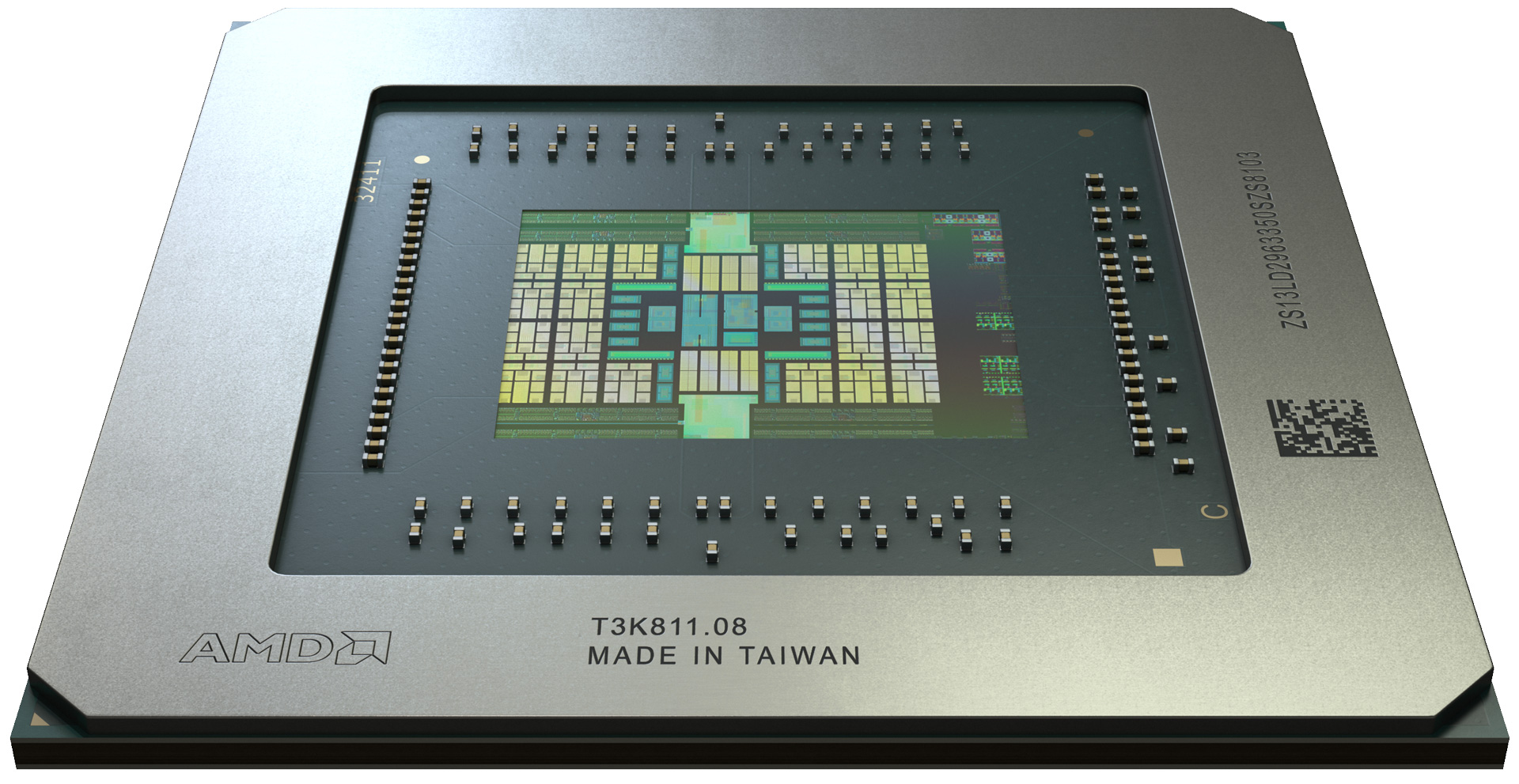
For Radeon RX 5700, AMD has snipped the Compute Unit count by 10 percent, bringing the stream processor count down to 2,304 and texture units to 144. Clock speeds also take a hit, with the Game Clock (the expected minimum clock speed in gaming workload and closest equivalent to Nvidia’s Boost Clock) dropping by 130MHz. The voltage/frequency curve also seems less opportunistic given that the Peak Clock is down by a greater amount, 180MHz. This may well be down to the tighter power limit of 185W, which sits 25W higher than RTX 2060 and 10W higher than RTX 2070 Super.
RX 5700, then, allows AMD to make use of Navi 10 yields that can’t quite pass validation with all cores enabled and/or at the higher clock speeds of RX 5700 XT. This is a tried and tested approach to GPU market segmentation and much more cost effective than attempting to produce different GPUs for every different card. Thus far it is only the Navi 10 GPU that AMD has officially confirmed for desktop and only these two cards (as well as the overclocked and cosmetically tweaked Radeon 5700 XT 50th Anniversary).
Memory-wise, it’s pleasing that AMD has retained the full 8GB GDDR6 frame buffer found on the RX 5700 XT, especially as Nvidia’s RTX 2060 only rocks 6GB. Similarly, the 256-bit memory interface is fully present, and the 14Gbps data rate is also carried over, giving RX 5700 the full 448GB/s of available memory bandwidth compared to RTX 2060’s 336GB/s. AMD is targetting 1440p gameplay with this card, so it’s good to see nothing has been lost here. A ROP count of 64 ROPs is also important with this in mind, and again this trounces Nvidia’s price-equivalent card by a full third.
AMD is still expecting to outperform Vega 64 with this card, although not by much. Still, with a 110W lower TDP and far fewer processing units, it’s clear that RDNA and 7nm are treading new ground for AMD where efficiency is concerned.
The RX 5700 will be available today in its reference form only; custom designs from AMD’s add-in board partners (AIBs) are likely to be on pre-order but aren’t due to arrive until August.

MSI MPG Velox 100R Chassis Review
October 14 2021 | 15:04

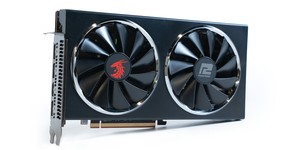
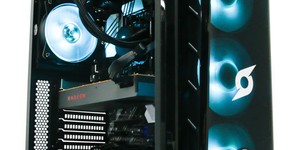
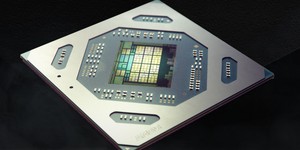





Want to comment? Please log in.